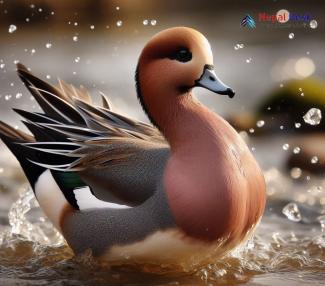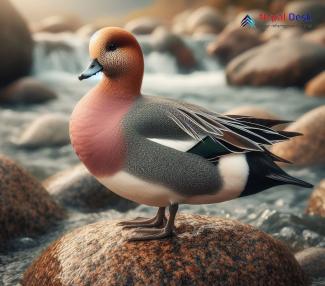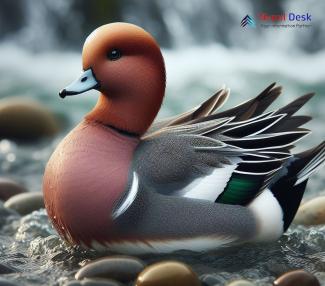For bird enthusiasts and wildlife lovers alike, the wigeon (Mareca penelope) remains a fascinating subject to study and admire. This graceful waterfowl species is known for its striking plumage, adaptive behavior, and humble presence in various regions of the world, including Nepal. This article will delve into the taxonomy and physical features of the wigeon, as well as discuss their habitat, diet, breeding, and nesting habits, and significant presence in Nepal.
Taxonomy and Physical Features
Belonging to the genus Mareca within the family Anatidae, the wigeon represents one of Europe's most prominent dabbling ducks. Medium-sized with distinctive coloration patterns, male wigeons are characterized by a plumed head with a striking green stripe, rust-colored chestnut breast feathers, and gray bodies. In contrast, female wigeons don slightly more muted tones with brownish-grey plumage. Both sexes share a bold white wing patch visible during flight.
Habitat and Diet
Naturally adapted to spending time both on land and in water, wigeons favor diverse habitats such as marshes, lakesides, riversides, or coastal waters. During periods of nesting or breeding season (spring through summer), they prefer areas with dense vegetation for protection. After migrating from their breeding sites in autumn when temperatures drop in their old habitats they move southwards to mild climates. Wigeons primarily consume aquatic plants by utilizing their wide beaks both in shallow water or on land around wetlands environment. Occasionally however they might go after insects or small crustaceans for nutrition.
Breeding and Nesting
The wigeon’s breeding season generally begins in April and extends until August. After pairing off during spring migration, the mated couples select a nesting site nestled among dense vegetation near water bodies. The female takes on the role of nest-building, laying between eight to twelve creamy-white eggs that require an incubation period lasting around 22-24 days. Both parents take care of the offspring once hatched, protecting and guiding the young chicks until they're capable of independent living.
Presence in Nepal
Nepal’s rich biodiversity and strategic location along migratory bird routes make it an essential destination for various bird species, including wigeons. The Rihpa Taal, Jagdishpur Lake, and Koshi Tappu Wildlife Reserve have been noted for significant wintering populations of wigeons, as these areas provide optimal feeding grounds, refuge from predators, and favorable temperatures.
In conclusion, the wigeon is a captivating species with a unique physical appearance, adaptive behavior, and fascinating ecology that has generated increasing interest among bird enthusiasts, nature photographers, and in general those who appreciate its subtle beauty. Its remarkable presence worldwide including countries like Nepal further emphasizes its importance within the avian kingdom. By understanding wigeon's habitat preferences, breeding habits, diet and geographic distribution we may work towards conserving their populations for future generations to admire and study.




